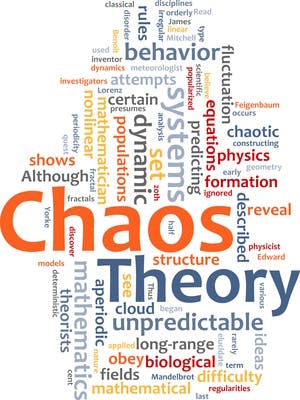I bet most people who read the headline think this relates to the chaos that HR teams face on a regular basis.
Add up the number of people in an organization and multiply that by each individuals thoughts, ideas and perspectives and you are bound to have chaos, right? And as HR professionals we try our best to manage the chaos.
Well, that’s not exactly where I was going. So here’s where chaos theory and quantum physics come into play, at least in my very non-scientific brain.
Buy-in that never seems to happen
You can’t manage chaos. The very best you can do is shepherd people in the right direction, let them use their knowledge, their energy and their ingenuity to “self-organize” the chaos.
It’s that pesky “buy-in” thing that everyone talks about, but never really seems to happen.
That’s the premise of chaos theory (again, non-scientific brain here). There are underlying patterns within chaos, and systems will tend to self-organize around these patterns, and emerge at a higher level of organizations. But if you try to control them, they will resist.
Research by McKinsey & Company director Colin Price showed that, in a longitudinal study of more than 700 companies, the focus on finance and operations may be secondary to the focus on enabling. He goes on to say that:
These healthy organizations, as we call them, are internally aligned around a clear vision and strategy; can execute to a high quality thanks to strong capabilities, management processes, and employee motivation; and renew themselves more effectively than their rivals do. In short, health today drives performance tomorrow.”
Why do we focus on non-people activities?
So why do organizations continue to focus on finance and operations, often to the exclusion of people? (Yes, I do realize that this is a wild generality, but I’ve seen it too many times.) in my humble opinion, dealing with the people is difficult, it’s emotional, it’s time consuming and it’s outside the comfort zone of many people in leadership positions. Dealing with the finance and operations makes sense — sometimes dealing with people doesn’t.
Back to chaos theory. It seems then, that developing leaders to be comfortable to lead in chaos, to be authentic and transparent, and to draw out the energy and innovation of their teams are the competencies that will move the organization into a bright future.
I see this as the role of human resources; it permeates selection, performance, learning, talent … every element of the HR profession. While all of the other functions are critically important, and can derail an organization if not managed appropriates (here is where the control part is good), enabling the workforce should be the strategic vision of the human resources group.
To do this, HR professionals need to be comfortable themselves in ambiguity and chaos. I have found that not always the case.
This originally appeared on the ….@ the intersection of learning & performance blog.
